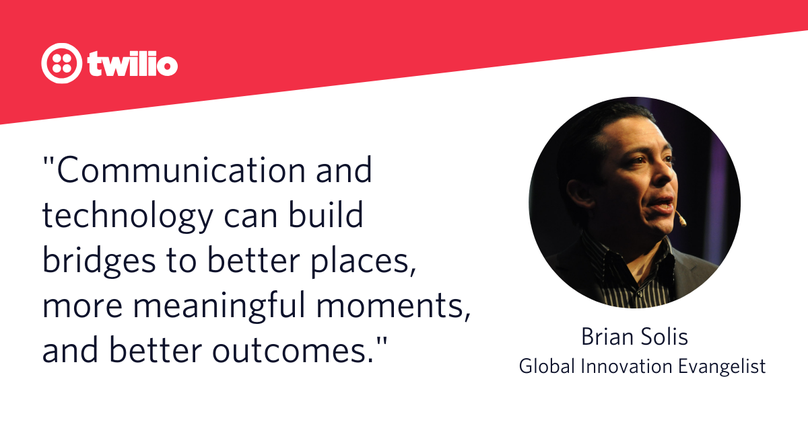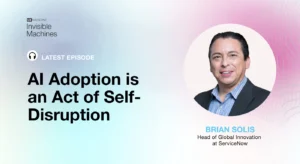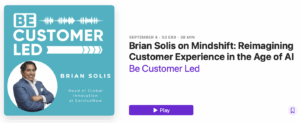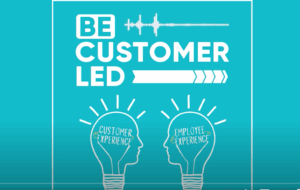
In a world of distraction, listeners make the best experience and engagement architects.
In a mobile-first world, experiences must be reimagined for the small screen. The best experiences will break the fourth wall of digital to deliver real human-to-human engagement.
Like software, mobile has eaten the world.
But mobile is more than a next-generation platform. Mobile is a powerful unifier. It has evolved into a digital hub for humanity, business and society. It brings us together while connecting us to other people, information and services on demand. It puts users in control of their experiences. It creates new worlds that transcend everyday norms.
These evolved norms influence new behaviors and preferences in all we do. We’ve changed, and we continue to change. As we do, we seek experiences in everything to enhance our current situation, state of mind and expectations.
As technology evolves so does behavior. None of it goes backward nor does the status quo ever stay in favor. Any business hoping to plug into this evolving society requires a human-centered model in which engagement and technology align to deliver personalized, intuitive, and value-added experiences.
We are all distracted
Mobile hasn’t just eaten the world, it’s also eaten our traditional grasp of space, presence and time. We blur the line between real and virtual worlds, making them one. We reach for our phones hundreds of times per day and thousands per week. Most mobile users receive upwards of 200 notifications per day. We light up our screens to capture important moments living in a mode of digital and analog duality.
We reach for our screens when the experience around us is seemingly less interesting. To say we get lost in these moments is an understatement. You’ve heard of (and most likely felt) FOMO. I’m sure you’ve experienced anxiety and confusion as you’ve strained to process the firehose of information and possibilities (and cat memes!) as you relentlessly scroll. Sometimes, you most likely struggled to feel like your best self when compared to everyone else’s best life.
We can’t overlook the currency of views, likes and followers and how we give and expect them in return. We can’t ignore how we feel about ourselves when those activities don’t add up to what we feel we deserve or when they don’t emulate those of our peers.
There are real cognitive and emotional costs that come from pervasive connectivity. Each time we reach for our device, we pull ourselves from whatever had our attention before. We’re learning to task switch in everything we do; how we work, how we browse, how we think and talk, how we simultaneously engage in the physical and digital worlds.
Doing so accelerates how our brains fire, retraining us to think and act faster in moments to keep up. Our short- and long-term memories are affected and so is our ability to activate depth and creativity on demand. We’re constantly chasing the next shiny object or captivating sensation. Being in the moment is now becoming a lost art.

The art of engagement is defined through technology, empathy, and artistry
Earning someone’s attention is an art and science. It’s always been. The difference in today’s world is that engagement dynamics are much more distracted, personal, and complex.
As a result of technology’s influence on behavior, people are unwittingly more self-centered, impatient, and demanding. They’re also more connected and hyper-informed. I refer to today’s customer, lovingly of course, as accidental narcissists. What’s more, people report that they increasingly carry stress and anxiety in their customer journey.
Businesses aren’t doing much to help.
Choices are everywhere. Decisions are daunting. Customer journeys are needlessly complicated and often irrelevant or impersonal.
Traditional communication strategies, legacy mindsets, processes and funnels, regardless of the shiny objects we employ, are in need of a critical upgrade.
Customers need “light” to guide them in productive, enlivening and personal ways toward desired outcomes. They need light to brighten the darkness and chaos of pervasive distractions and overwhelming choices. This is an invitation, and an incredible opportunity, to compete differently.
The good news is that we have the technology and the tools to do so. The key is to remember that change is never one-sided. As customers change, so must those hoping to reach them without becoming distractions like everything else in their life. Differentiation comes in how we use the tools and why.
To engage someone now, means that we understand them. We understand their moments, their feelings and intent, their preferences and expectations, their means of communication and what entices their attention to move them, deliver value and build meaningful relationships. We must also understand their feelings, frustrations and annoyances.
Distraction is something more than interference. It doesn’t have to be a negative. There can be positive interruptions to steer someone toward a brighter light. Communication and technology can build bridges to better places, more meaningful moments and better outcomes.
The other good news is we have the ability to understand how people communicate, their intentions, times when they’re open to engagement, and what they value. We also have the ability to predict their needs over time.
What changes, is us.
Our words, intentions and the next steps we present to someone in moments of truth now count for everything.
Listen. Observe. Discover.
“We have two ears and one mouth for a reason,” the old saying about the importance of listening goes.
But in everyday business applications, models aren’t really designed to listen, they’re designed to convert. For the most part, we profile customers, we don’t really know them. More often than not, especially when it comes to business communications, we talk at them rather than personally talk to them.
Even though we have a direct line to customers through an incredible array of personal channels, we must take pause. Doing so will yield a competitive advantage.
While everyone else is scrambling to keep up with and reach customers, grab their attention and pull them through the funnel, this is a time to listen and to learn.
Technology gives us, not ironically, the ability to finally be more human, to put back the “relationship” in CRM and the “message” back in messaging. We can finally, not only deliver personalization; we can use communications technology to do so as a means of humanization.
We must use technology to listen to data with the intent of doing more than converting. Conversions are merely an outcome of a meaningful experience—so are relationships.
We must translate data into stories that inspire more relevant, personalized and value-added engagement. Those stories are equally important to incite change and innovation within your organization.
We must also reimagine next best actions as a series of thoughtful steps in the customer journey, as they envision or expect it. Attention spans, patience, and emotion are all powerful catalysts and inhibitors. Think of next steps as thoughtful task switching, bit by bit, to walk something through to a mutually beneficial outcome.
We must deliver value and meaningful experiences that customers appreciate and remember. Those memories serve as the foundation of any brand and are powerful, emotional drivers toward loyalty and customer lifetime value. Communications platforms serve as a bridge. In an era of pervasive distractions and unlimited choices, cast an empathetic and positive light across that bridge. It lights the way for people to take steps closer to you again and again.
Originally published at Twilio Hub.
Photo by Ben Kolde on Unsplash

Brian Solis | Author, Keynote Speaker, Futurist
Brian Solis is world-renowned digital analyst, anthropologist and futurist. He is also a sought-after keynote speaker and an 8x best-selling author. In his new book, Lifescale: How to live a more creative, productive and happy life, Brian tackles the struggles of living in a world rife with constant digital distractions. His previous books, X: The Experience When Business Meets Design and What’s the Future of Business explore the future of customer and user experience design and modernizing customer engagement in the four moments of truth.
Invite him to speak at your next event or bring him in to your organization to inspire colleagues, executives and boards of directors.





Leave a Reply